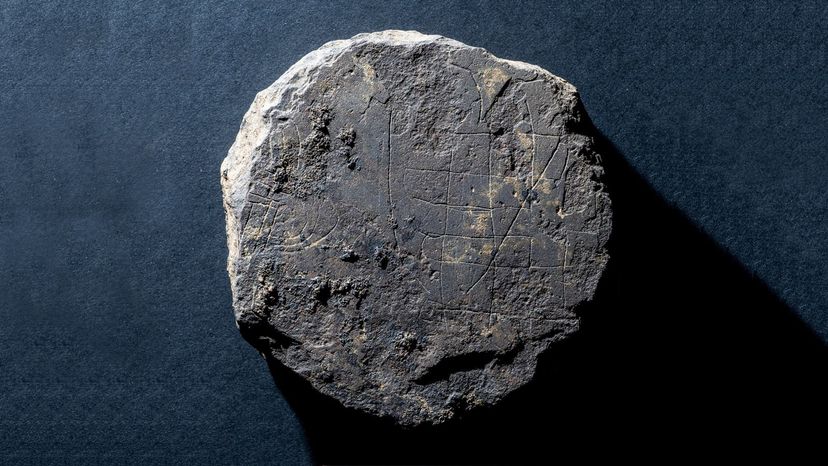
They were looking for a lost monastery, where the serious work of religious writing went on in the Middle Ages. What they found instead were the remnants of a bit of monk-style fun.
Archaeologists digging 30 miles (48 kilometers) north of Aberdeenshire, Scotland, uncovered a stone gaming board that 7th- or 8th-century monks may have used in their down time to play Hnefatafl. In this Norse game, also known as King's Table, pieces representing a king and his men face off against pieces representing two dozen attackers.
Advertisement
Squares incised on the disc-shaped board would have held the fighting men, while the king would have been stationed on a central throne area. The game was won when the king was captured or when he successfully made it to sanctuary in one of the four corners of the board.
Sound a little like chess? You bet.
Archaeologist Ali Cameron said the game board was a rare object, one of the few early game boards to be uncovered in Scotland. The others were also associated with religious sites. Did the monks sit around and bet on the outcome? We don't know. But when these monks weren't gaming they were likely carrying out their duties at the Monastery of Deer.
Archaeologists have long searched for the Monastery of Deer because monks there in the 10th century created an illuminated manuscript, the Book of Deer. Other than the book, there is no trace left of the monastery's existence. On the book's sheets of parchment, the monks penned the four gospels of the Bible, the Apostles' Creed and a sacrament known as the anointing of the sick, according to Smithsonian magazine. The 6- by 4-inch (15- by 10-centimeter) manuscript was written in Old Irish and Vulgate Latin. And 300 years later, other monks writing in Scottish Gaelic scribbled notes in the margins about land grants made to the monastery. The manuscript, now housed at the Cambridge University Library, is the earliest known text written in Gaelic, preceding other Gaelic documents by three centuries.
Based on carbon dating, the game board was several centuries older than the Book of Deer.
Advertisement
